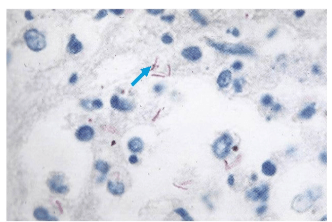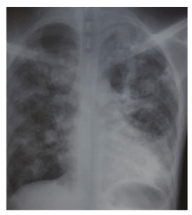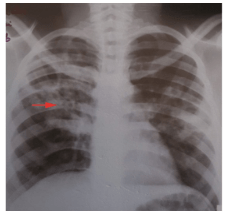1. Adhikari M, Jeena P, Bobat R, et al. HIV-associated tuberculosis in newborn and young infant. Int J Pediatr. 2011; 2011: 354208. doi: 10.1155/2011/354208
2. Sugarman J, Colvin C, Moran AC, Oxlade O. Tuberculosis in pregnancy: An estimate of the global burden of disease. Lancet Glob Health. 2014; 2(12): e710-e716. doi: 10.1016/S2214-109X(14)70330-4
3. Jana N, Barik S, Arora N, Singh AK. Tuberculosis in pregnancy: The challenges for South Asian countries. J Obstet Gynaecol Res. 2012; 38(9): 1125-1136. doi: 10.1111/j.1447-0756.2012.01856.x
4. Connolly M, Nunn P. Women and tuberculosis. World Health Stat Q. 1996; 49(2): 115-119. Web site. http://europepmc.org/abstract/med/9050189. Accessed August 29, 2016
5. Sherriff FG, Manji KP, Manji MP, et al. Latent tuberculosis among pregnant mothers in a resource poor setting in Northern Tanzania: A cross-sectional study. BMC Infect Dis. 2010; 10: 52. doi: 10.1186/1471-2334-10-52
6. Gatongi DK, Gitau G, Kay V, Ngwenya S, Lafong C, Hasan A. Female genital tuberculosis. Obstetrician Gynaecologist. 2005; 7(2): 75-79. doi: 10.1576/toag.7.2.075.27000
7. Servilio J. HIV/TB dual infection cause for concern. Posit Aware. 1995; 8.
8. Rezai S, LoBue S, Adams D, et al. Untreated active tuberculosis in pregnancy with intraocular dissemination: A case report and review of the literature. Case Rep Pulmonol. 2015; 2015: 370462. doi: 10.1155/2015/370462
9. Nguyen HT, Pandolfini C, Chiodini P, Bonati M. Tuberculosis care for pregnant women: a systematic review. BMC Infect Dis. 2014; 14: 617. doi: 10.1186/s12879-014-0617-x
10. Belay M, Bjune G, Abebe F. Prevalence of tuberculosis, HIV, and TB-HIV co-infection among pulmonary tuberculosis suspects in a predominantly pastoralist area, northeast Ethiopia. Glob Health Action. 2015; 8: 2749. doi: 10.3402/gha.v8.27949
11. Marjani M, Yousefzadeh A, Baghaei P, et al. Impact of HIV infection on tuberculosis pleural effusion. Int J STD AIDS. 2016; 27(5): 363-369. doi: 10.1177/0956462415581738
12. Bush JJ. Protocol for tuberculosis screening in pregnancy. J Obstet Gynecol Neonatal Nurs. 1986; 15(3): 225-230. doi: 10.1111/j.1552-6909.1986.tb01389.x
13. Alaoui FZ, Rachad M, Chaara H, Bouguern H, Melhouf MA. Peritoneal tuberculosis in pregnancy: A case report. Pan Afr Med J. 2012; 12: 65.
14. Jana N, Vasishta K, Saha SC, Ghosh K. Obstetrical outcomes among women with extrapulmonary tuberculosis. N Engl J Med. 1999; 341(9): 645-649. doi: 10.1056/NEJM199908263410903
15. Kovganko PA. The course of pregnancy, labor and perinatal outcomes in females with extrapulmonary tuberculosis. Probl Tuberk Bolezn Legk. 2004; (2): 38-41. Web site. http://europepmc.org/abstract/med/15137128. Accessed August 29, 2016
16. El-Messidi A, Czuzoj-Shulman N, Spence AR, Abenhaim HA. Medical and obstetric outcomes among pregnant women with tuberculosis: a population-based study of 7.8 million births. Am J Obstet Gynecol. 2016; pii: S0002-9378(16)30574-9. doi: 10.1016/j.ajog.2016.08.009
17. Taweevisit M, Nisagornsen C, Thorner PS. Intrauterine tuberculosis manifesting as acute chorioamnionitis: A case report and review of the literature. Pediatr Dev Pathol. 2015; 18(4): 335-338. doi: 10.2350/15-02-1607-CR.1
18. Hoyos-Orrego A, Trujillo-Honeysberg M, DiazgranadosCuenca L. Congenital tuberculosis as a result of disseminated maternal disease: case report. Tuberc Respir Dis (Seoul). 2015; 78(4): 450-454. doi: 10.4046/trd.2015.78.4.450
19. Kumar RM, Uduman SA, Khurrana AK. Impact of pregnancy on maternal AIDS. J Reprod Med. 1997; 42(7): 429-434. Web site. http://europepmc.org/abstract/med/9252934. Accessed August 29, 2016
20. Bishara H, Goldstein N, Hakim M, Vinitsky O, ShechterAmram D, Weiler-Ravell D. Tuberculosis during pregnancy in Northern Israel, 2002-2012: Epidemiology and clinical practices. Isr Med Assoc J. 2015; 17(6): 346-350. Web site. http:// www.ima.org.il/IMAJ/ViewArticle.aspx?year=2015&month=0 6&page=346. Accessed August 29, 2016
21. Dautzenberg B, Grosset J. Tuberculosis and pregnancy. Rev Mal Respir. 1988; 5(3): 279-283.
22. Keskin N, Yilmaz S. Pregnancy and tuberculosis: To assess tuberculosis cases in pregnancy in a developing region retrospectively and two case reports. Arch Gynecol Obstet. 2008; 278(5): 451-455. doi: 10.1007/s00404-008-0594-7
23. Petrovic S, Pribić RL, Rodić BB, Dautović GV, Cegar S. Perinatal tuberculosis-diagnostic and therapeutic approach. Med Pregl. 2012; 65(11-12): 496-501. doi: 10.2298/MPNS1212496P
24. Prevost MR, Fung Kee Fung KM. Tuberculosus meningitis in pregnancy-implications for the mother and fetus: Case report and literature review. J Matern Fetal Med. 1999; 8(6): 289-294. Web site. http://www.tandfonline.com/doi/ abs/10.3109/14767059909020499. Accessed August 29, 2016
25. Bermejo A, Veeken H, Berra A. Tuberculosis incidence in developing countries with high prevalence of HIV infection. AIDS. 1992; 6(10): 1203-1206. Web site. http://journals.lww. com/aidsonline/abstract/1992/10000/tuberculosis_incidence_ in_developing_countries.22.aspx. Accessed August 29, 2016
26. Suthar AB, Zachariah R, Harries AD. Ending tuberculosis by 2030: Can we do it? Int J Tuberc Lung Dis. 2016; 20(9); 1148- 1154. doi: 10.5588/ijtld.16.0142








